First, we take care of the trivial case where the angle is zero or a multiple of pi/2. Then the largest rectangle is the same as the original rectangle.
In general, the inner rectangle will have 3 points on the boundaries of the outer rectangle. If it does not, then it can be moved so that one vertex will be on the bottom, and one vertex will be on the left. You can then enlarge the inner rectangle until one of the two remaining vertices hits a boundary.
We call the sides of the outer rectangle R1 and R2. Without loss of generality, we can assume that R1 <= R2. If we call the sides of the inner rectangle H and W, then we have that
H cos a + W sin a <= R1
H sin a + W cos a <= R2
Since we have at least 3 points on the boundaries, at least one of these inequality must actually be an equality. Let's use the first one. It is easy to see that:
W = (R1 - H cos a) / sin a
and so the area is
A = H W = H (R1 - H cos a) / sin a
We can take the derivative wrt. H and require it to equal 0:
dA/dH = ((R1 - H cos a) - H cos a) / sin a
Solving for H and using the expression for W above, we find that:
H = R1 / (2 cos a)
W = R1 / (2 sin a)
Substituting this in the second inequality becomes, after some manipulation,
R1 (tan a + 1/tan a) / 2 <= R2
The factor on the left-hand side is always at least 1. If the inequality is satisfied, then we have the solution. If it isn't satisfied, then the solution is the one that satisfies both inequalities as equalities. In other words: it is the rectangle which touches all four sides of the outer rectangle. This is a linear system with 2 unknowns which is readily solved:
H = (R2 cos a - R1 sin a) / cos 2a
W = (R1 cos a - R2 sin a) / cos 2a
In terms of the original coordinates, we get:
x1 = x4 = W sin a cos a
y1 = y2 = R2 sin a - W sin^2 a
x2 = x3 = x1 + H
y3 = y4 = y2 + W
